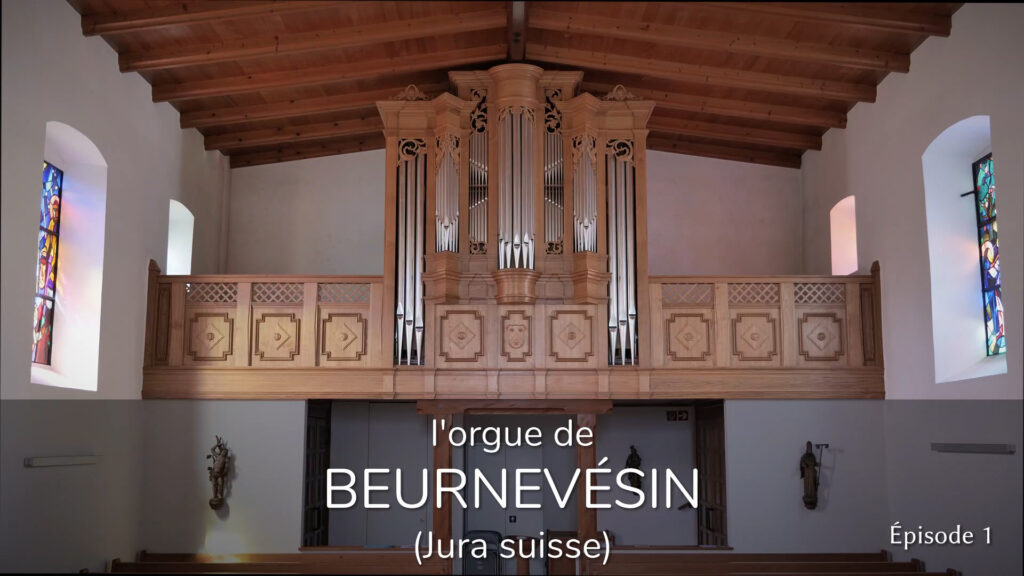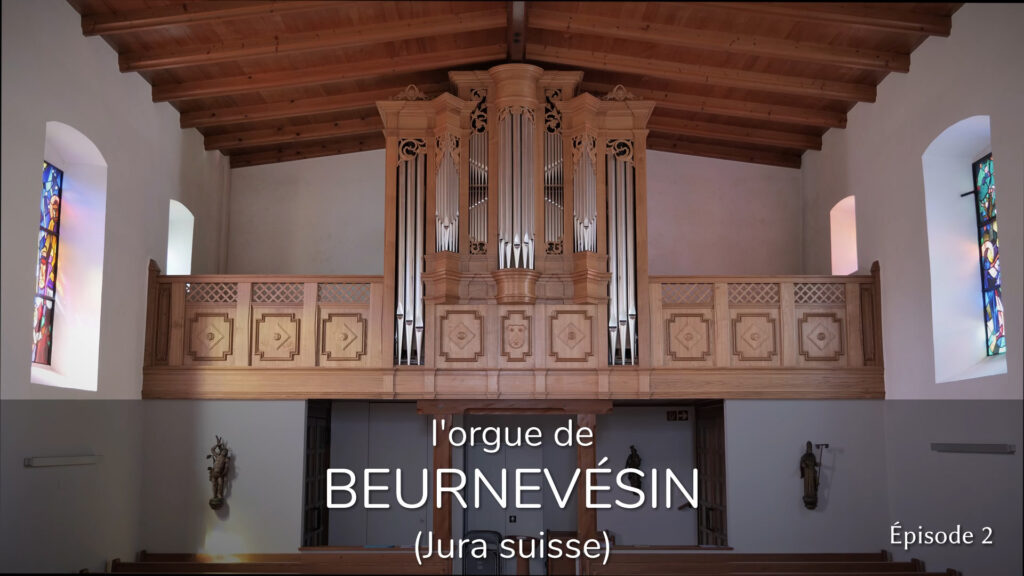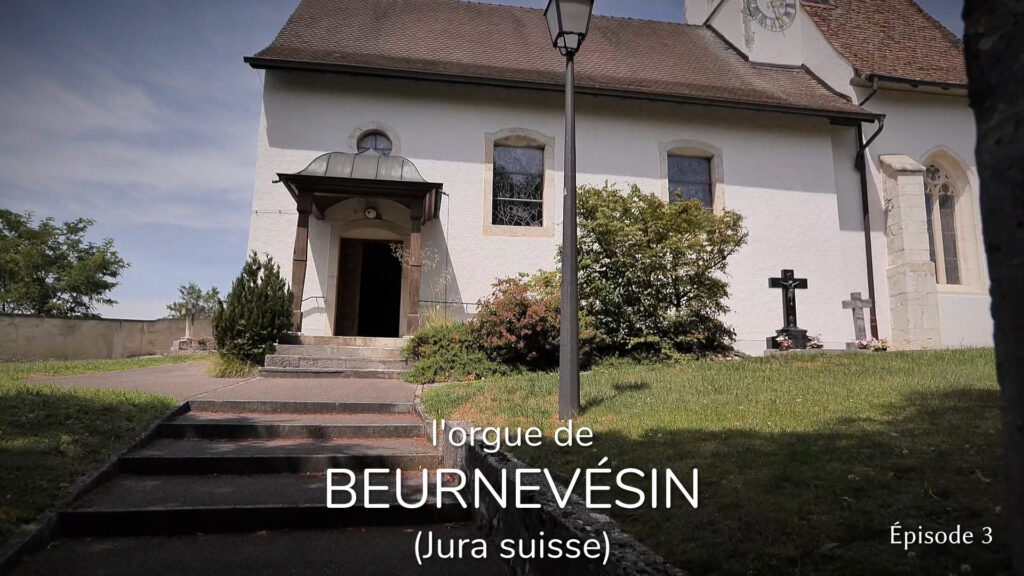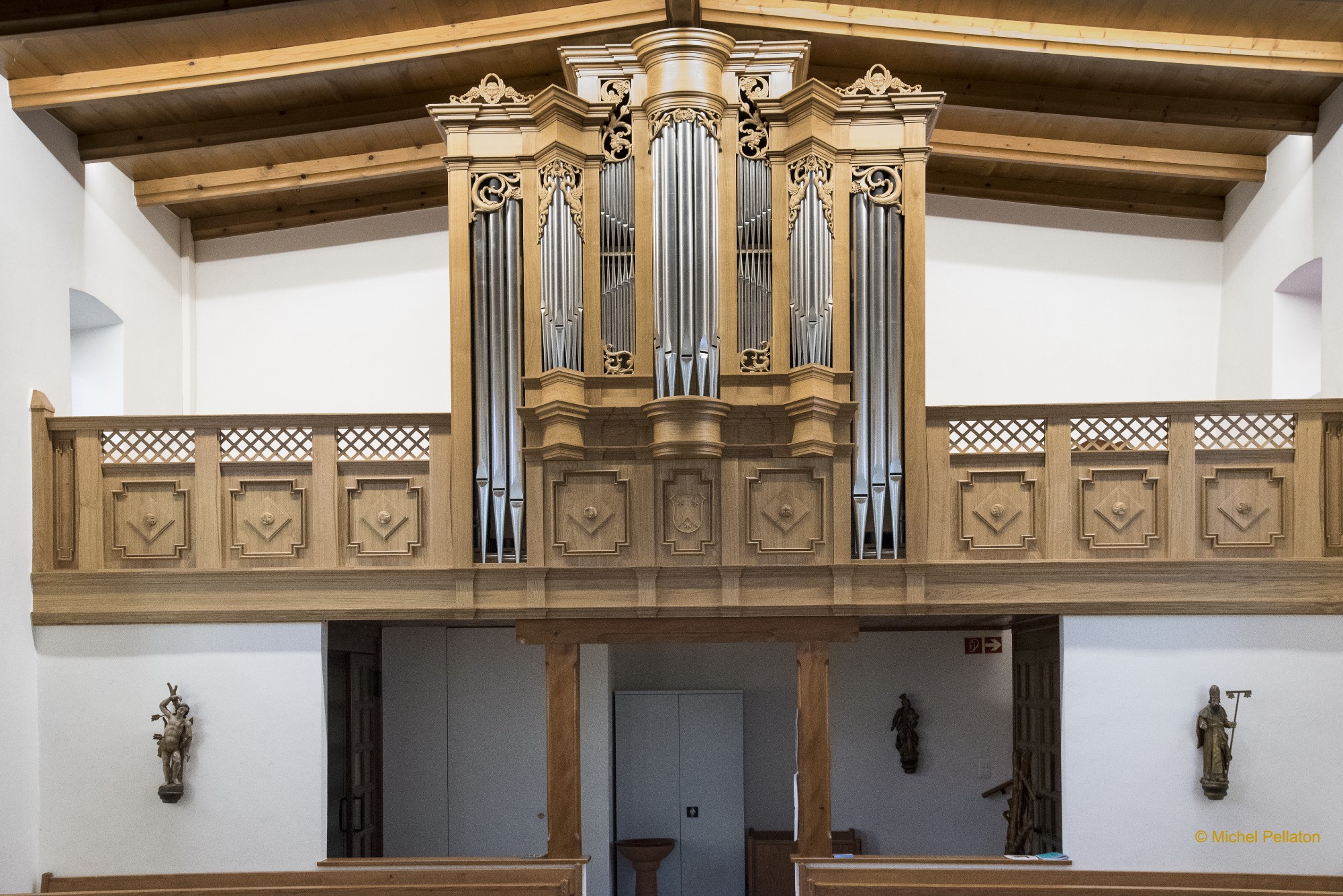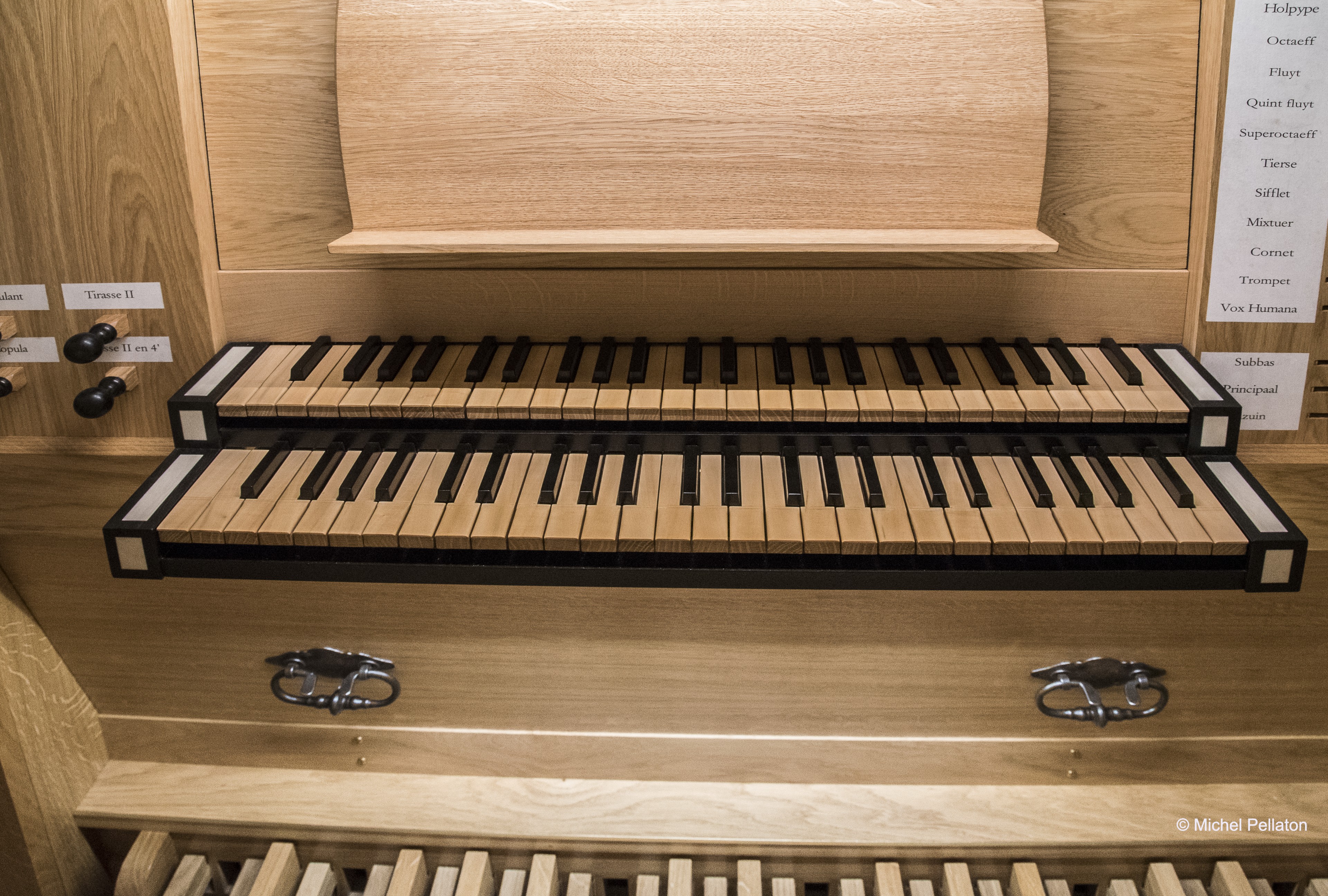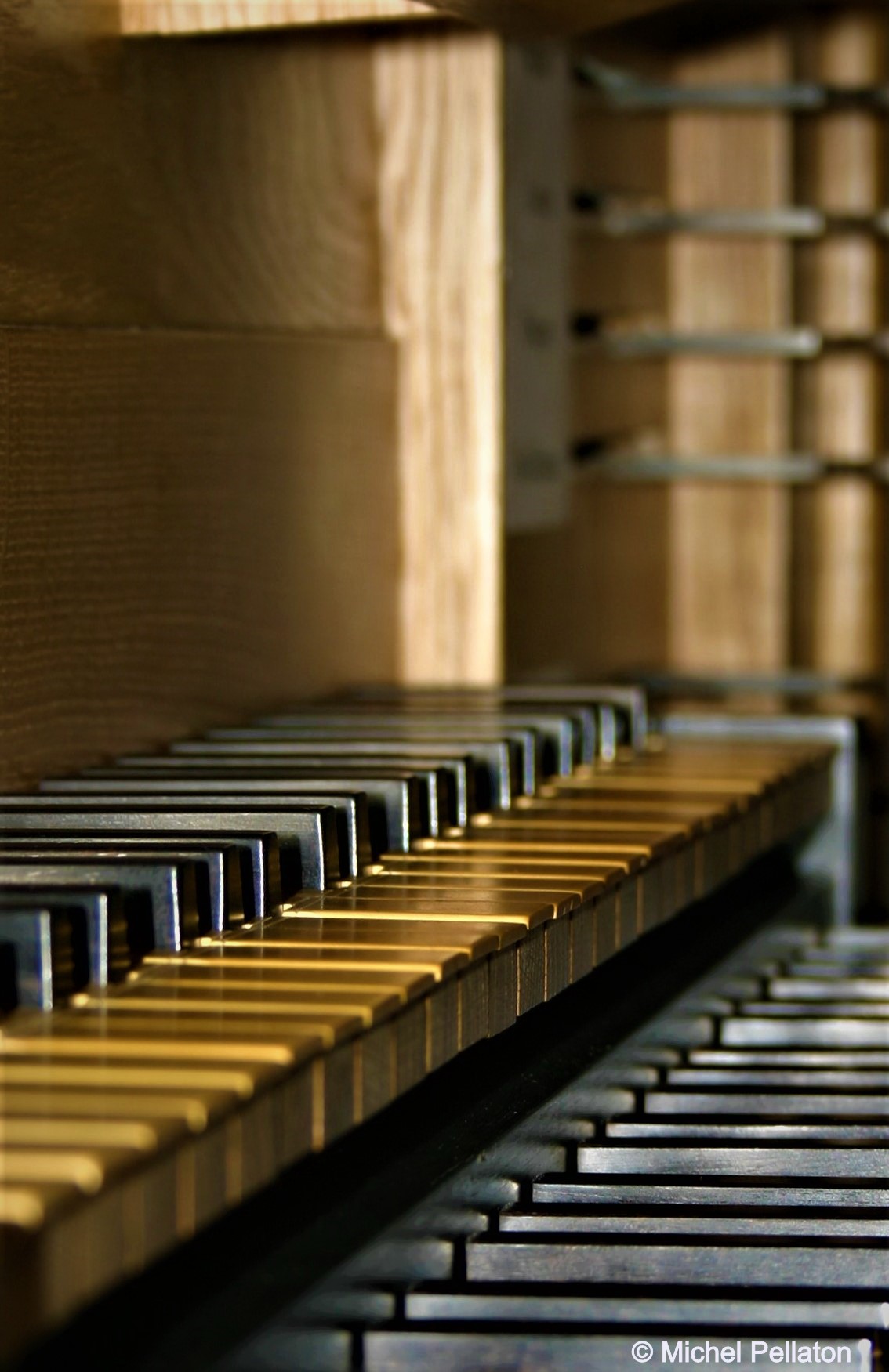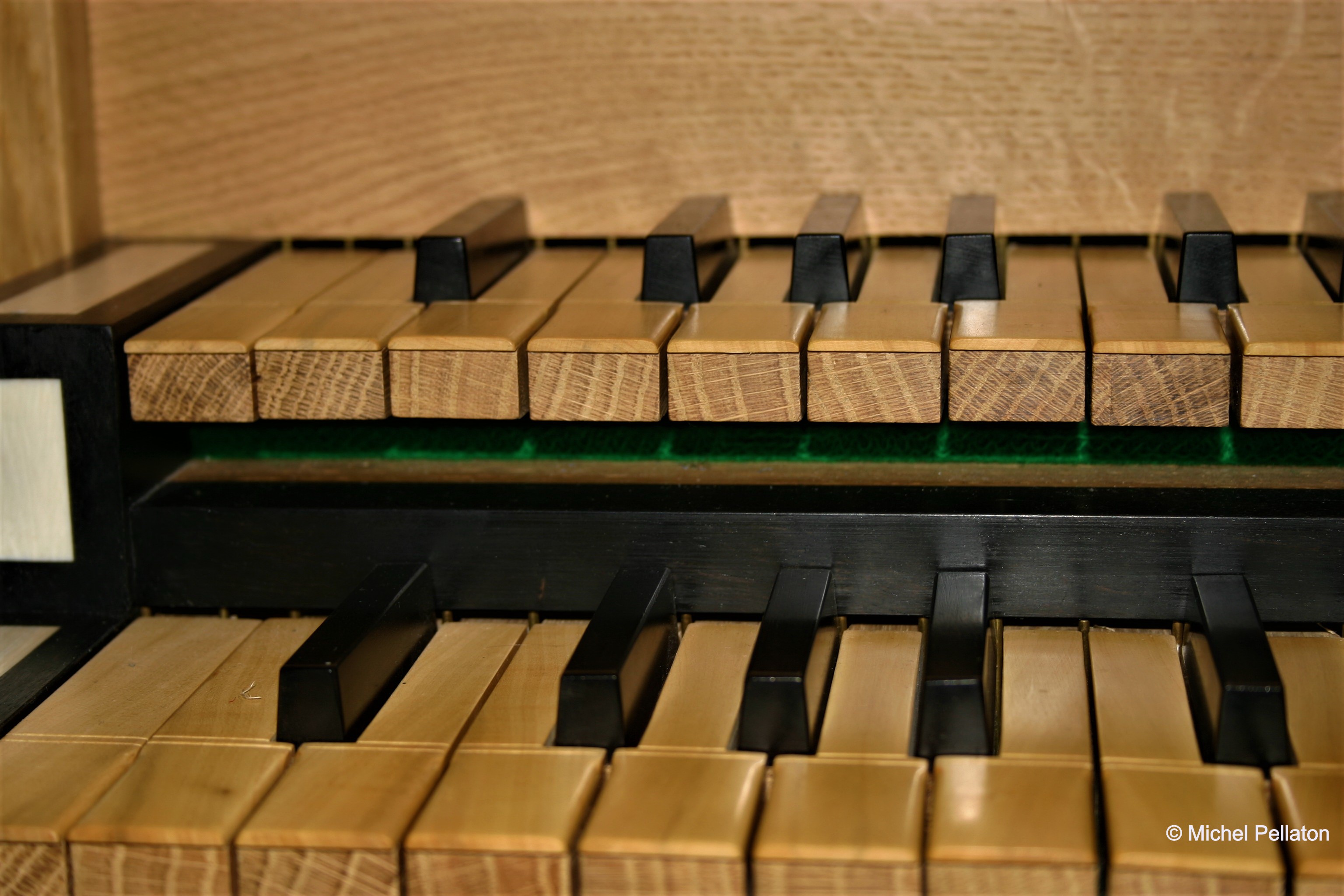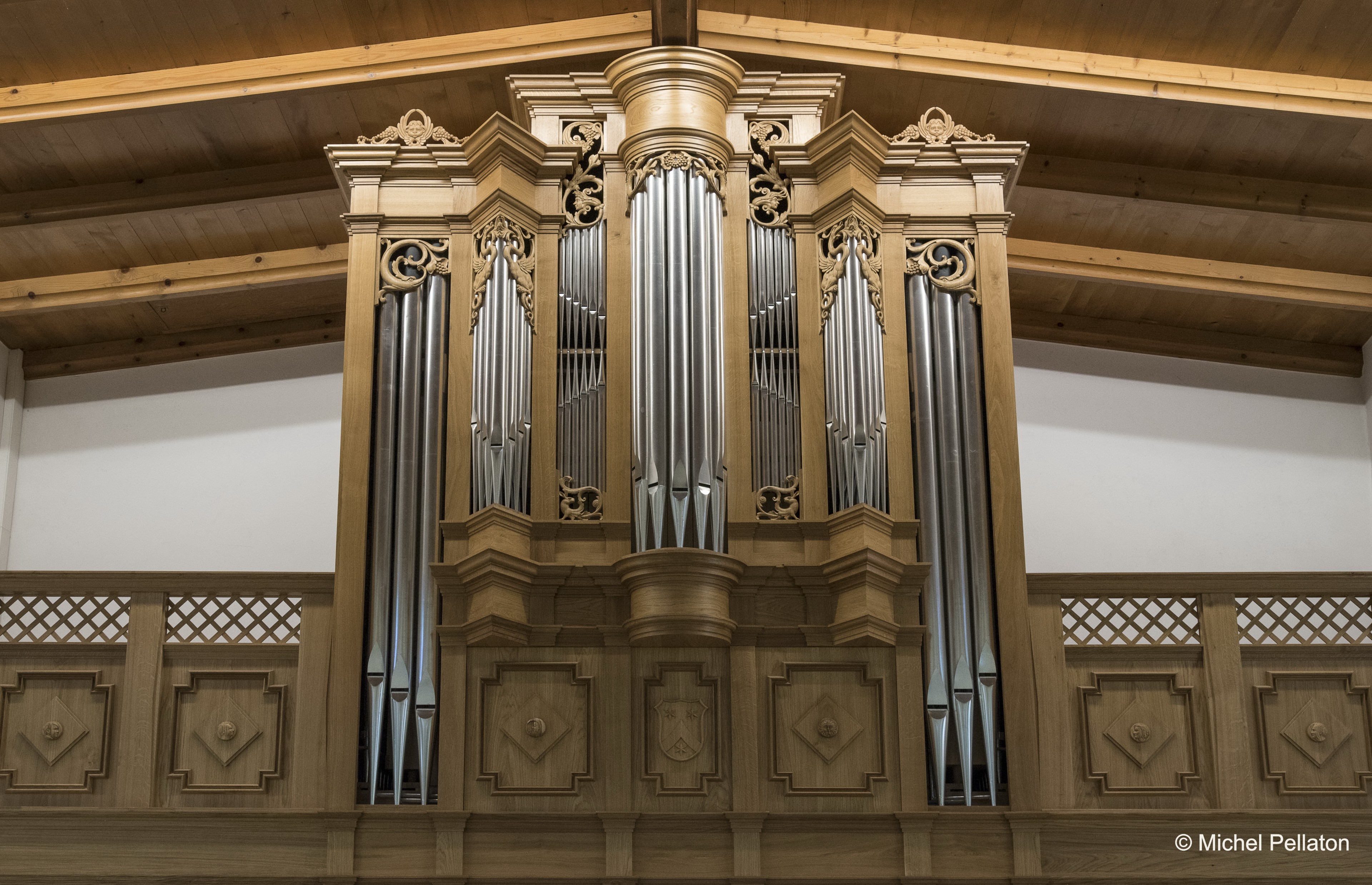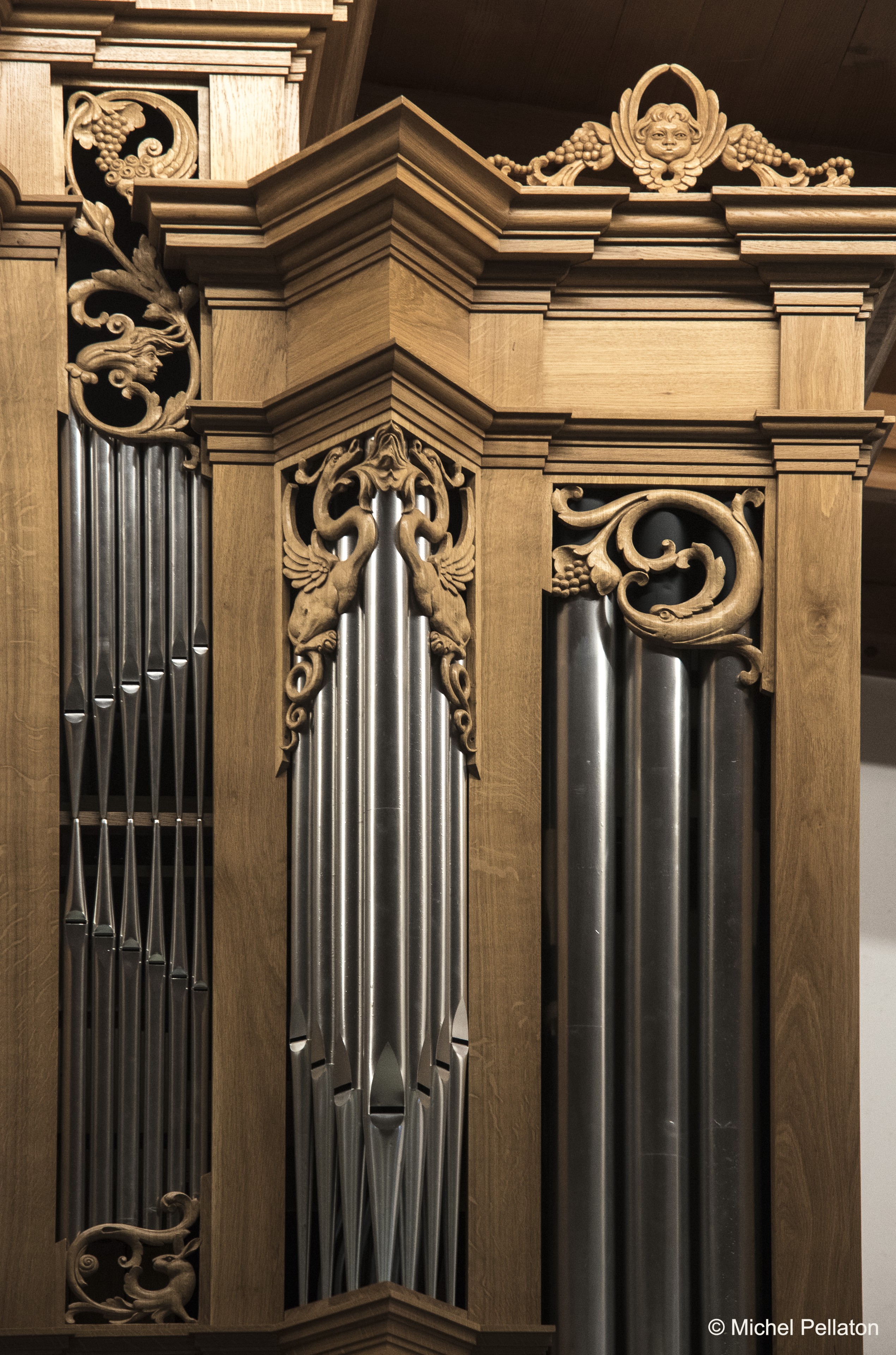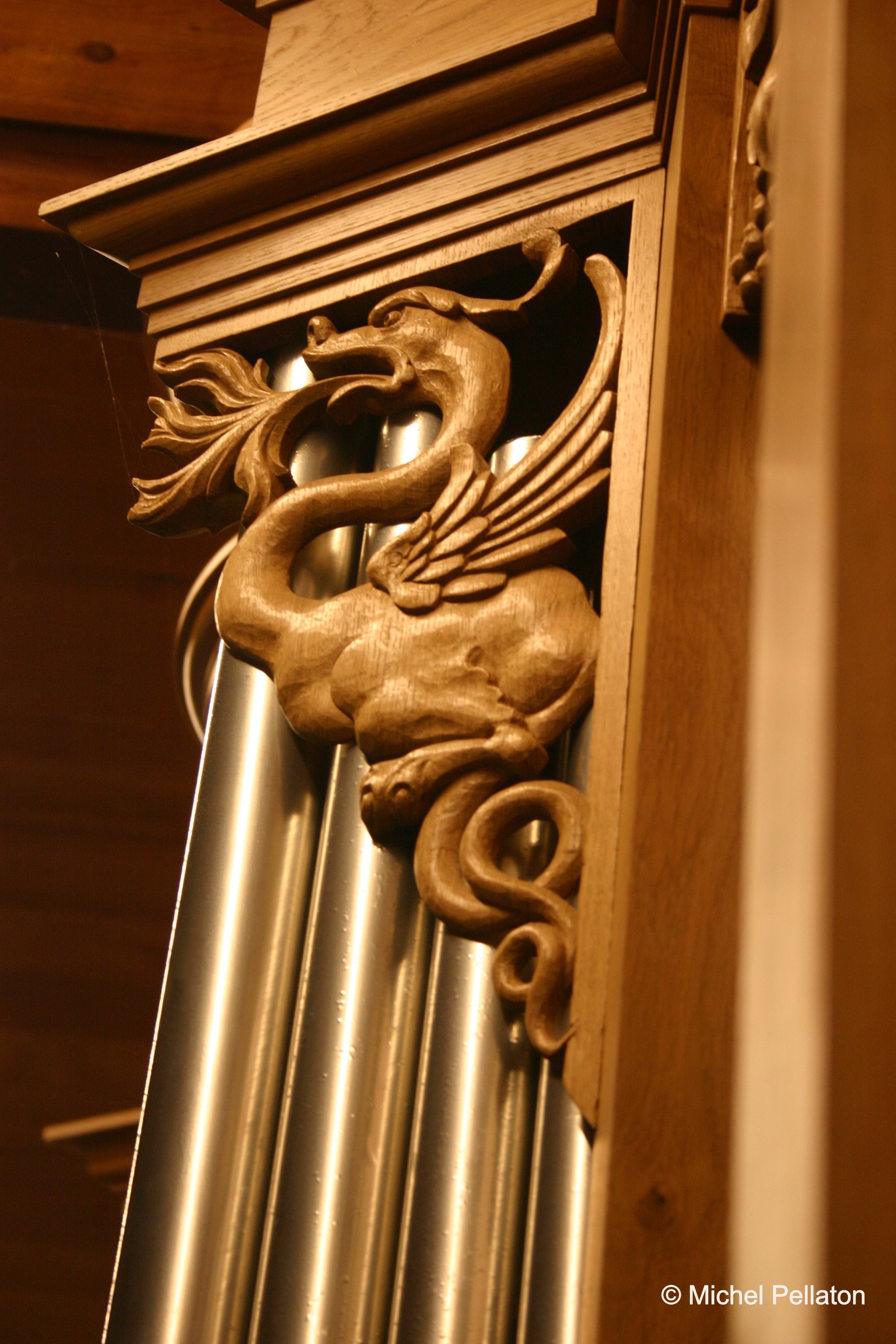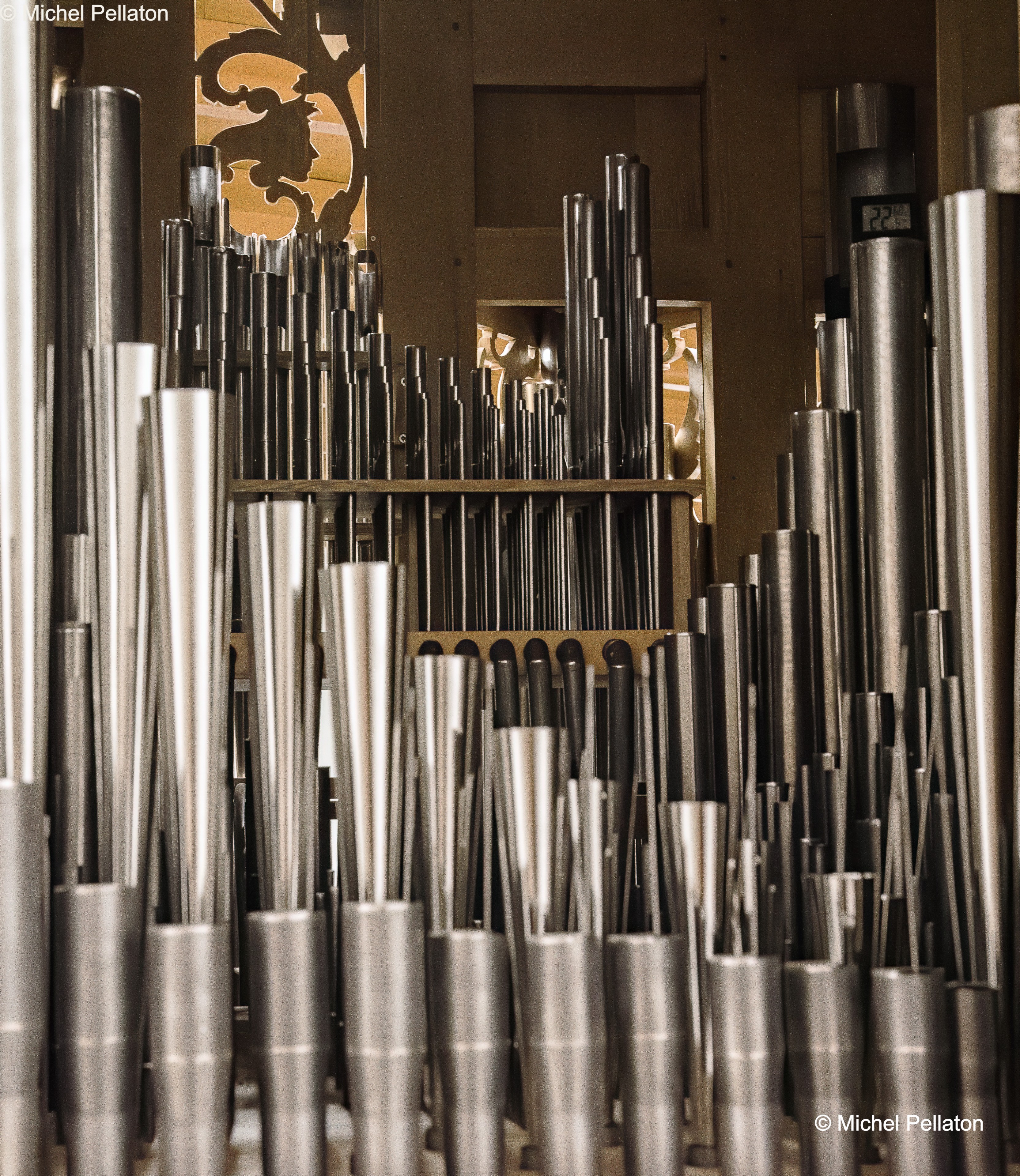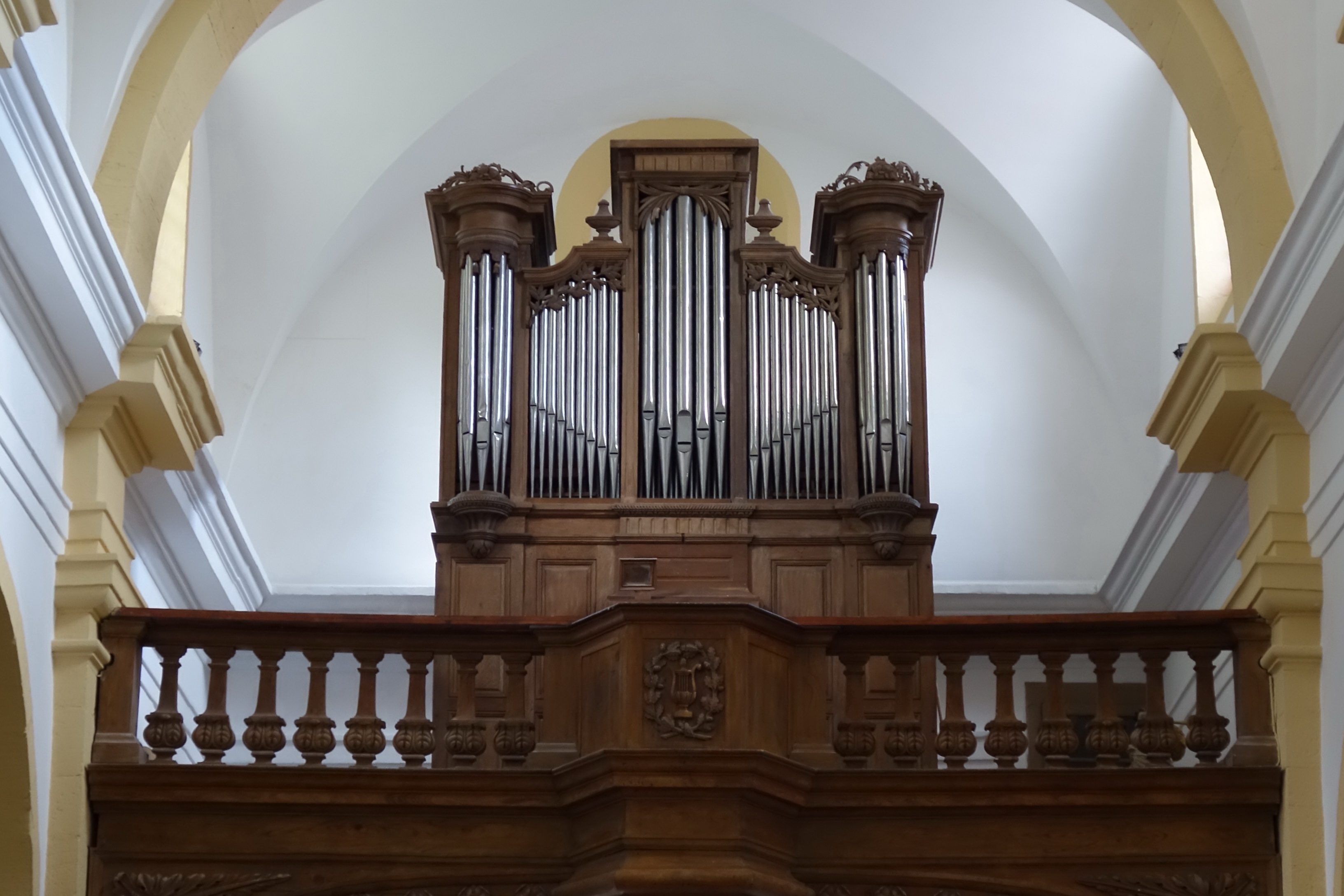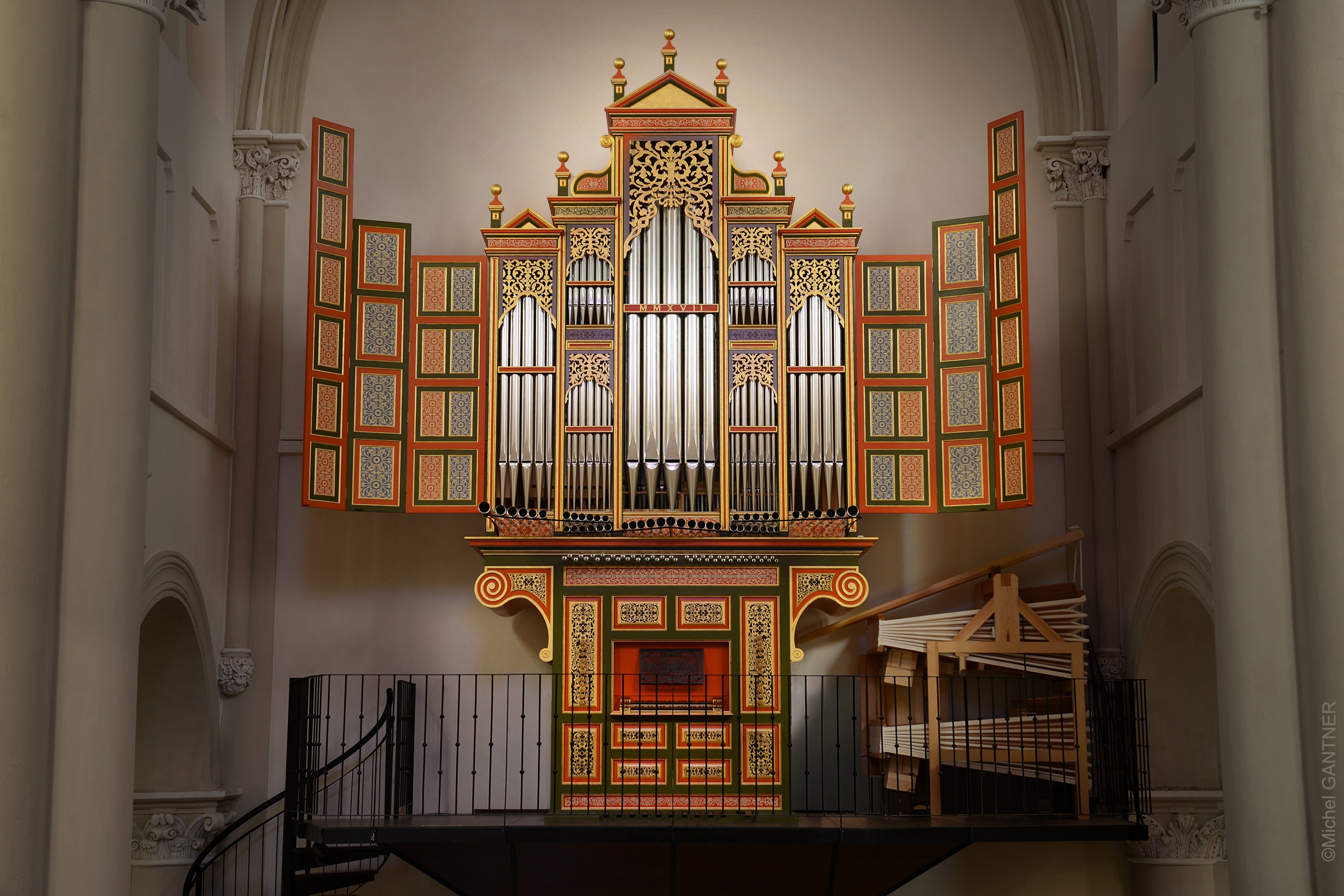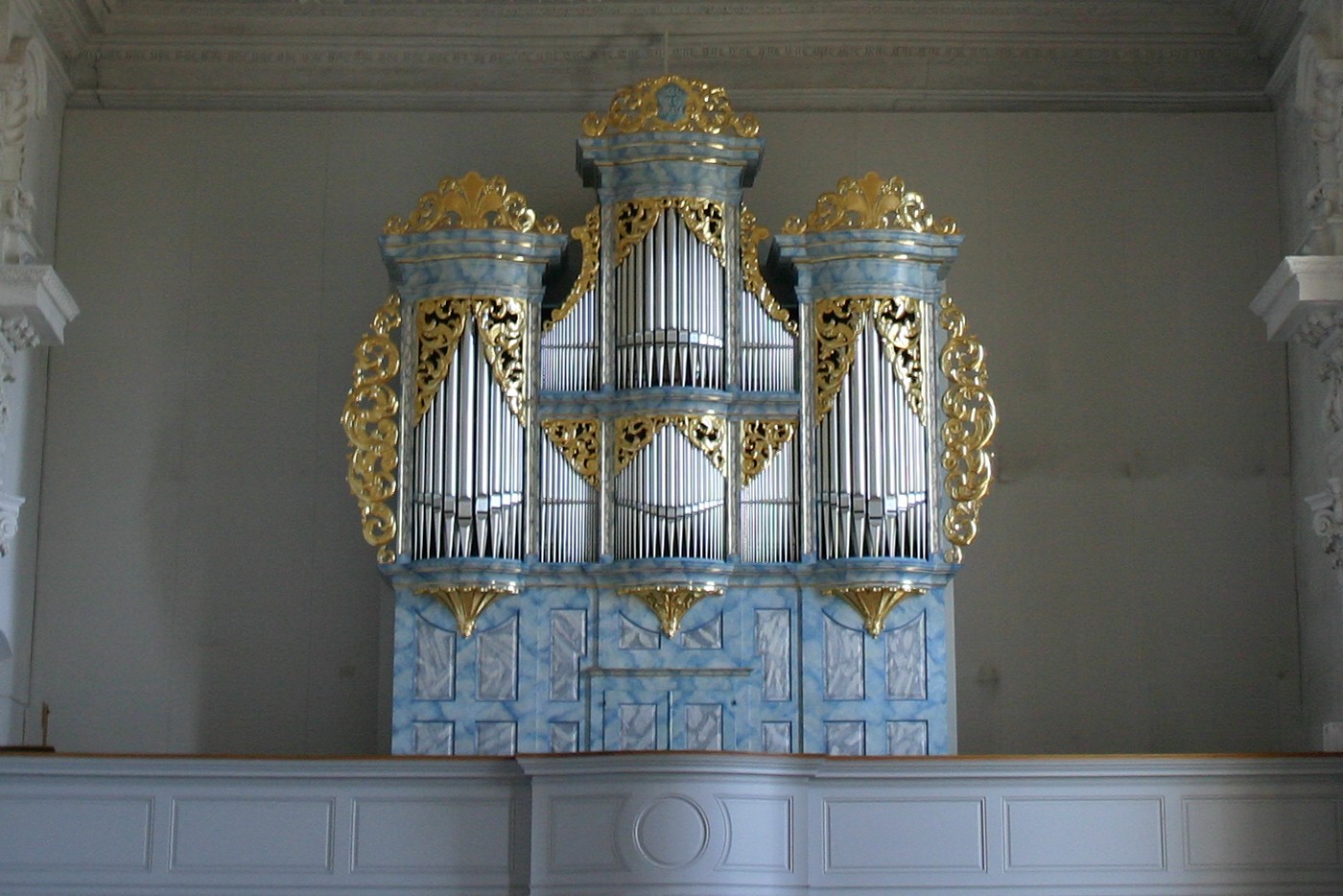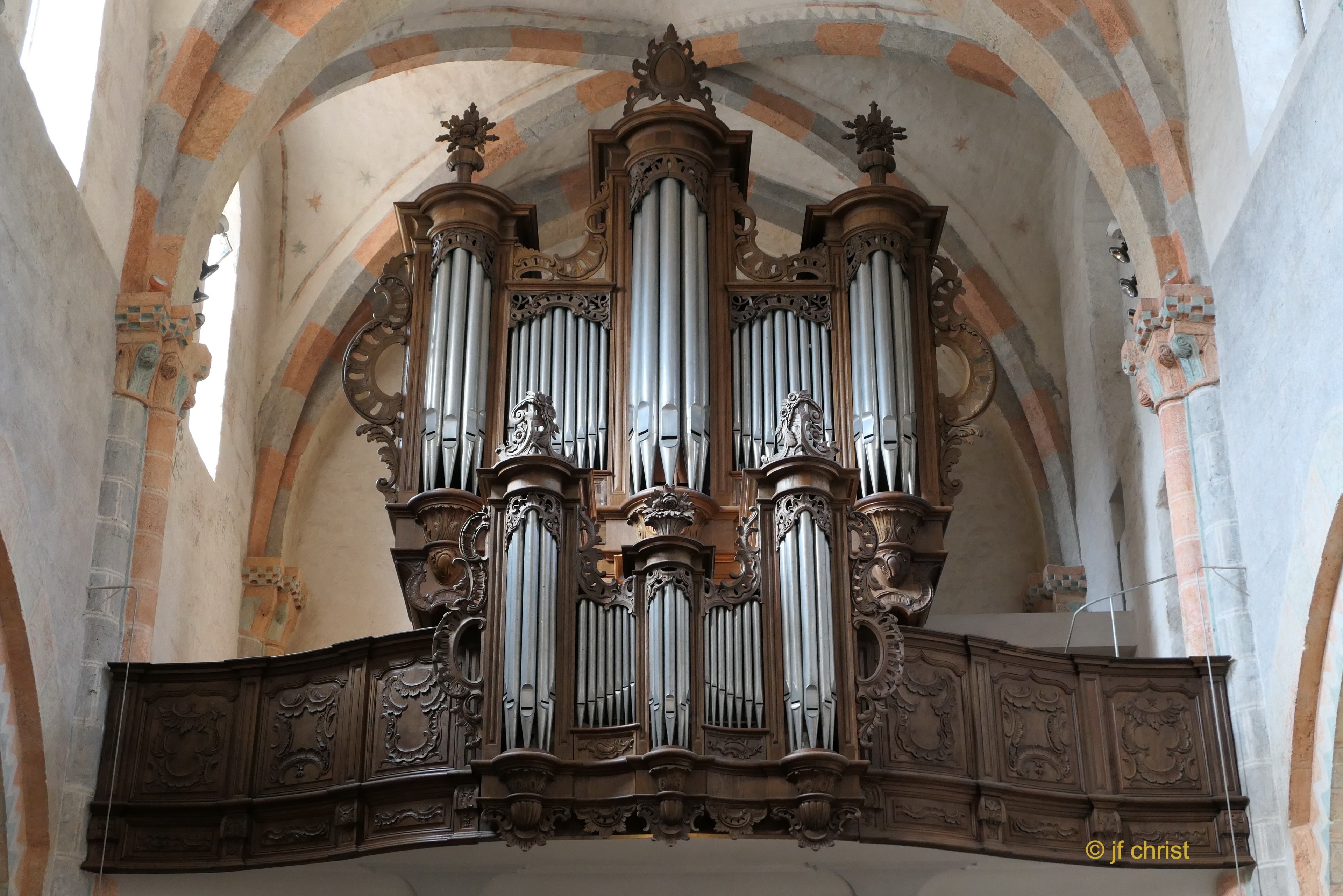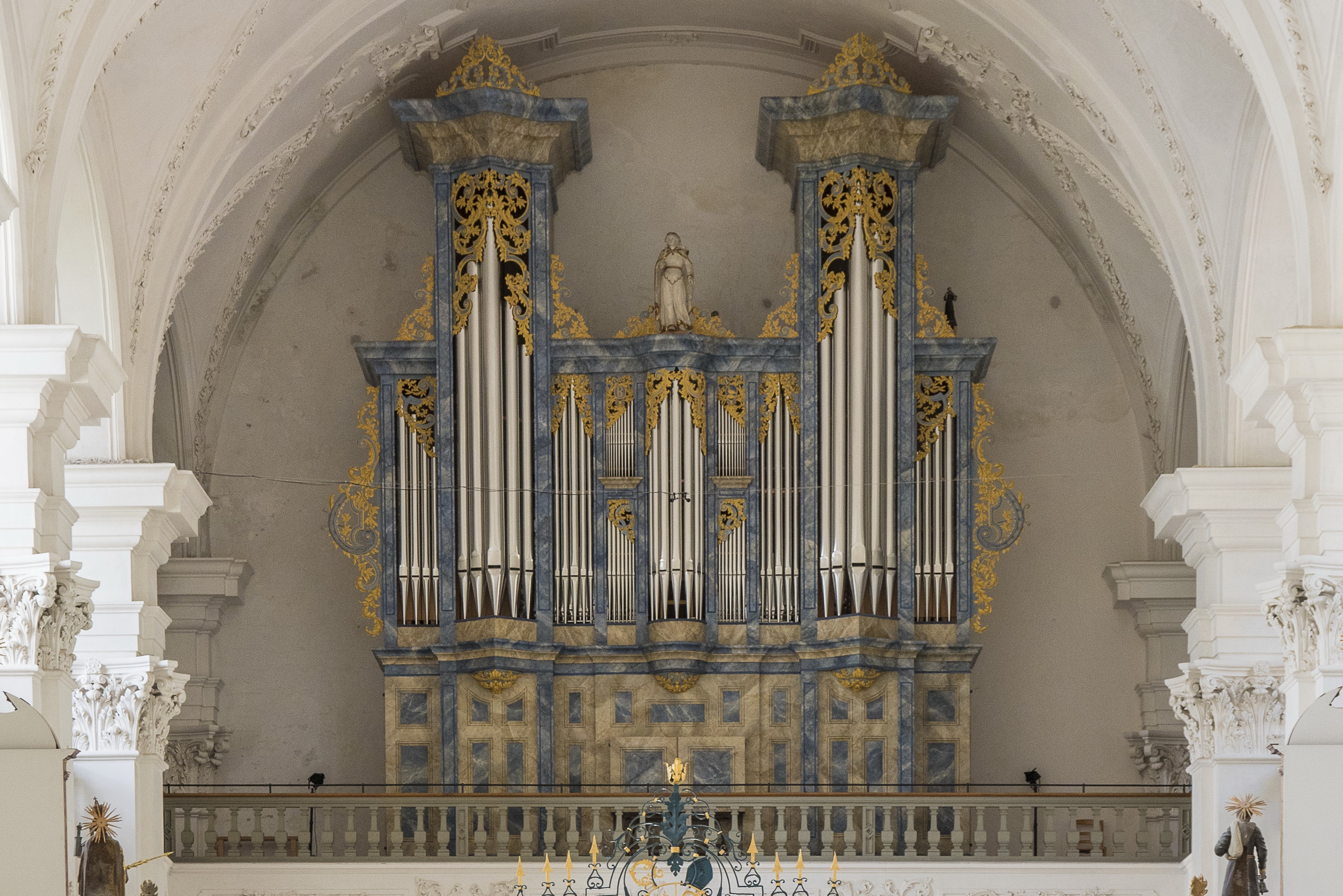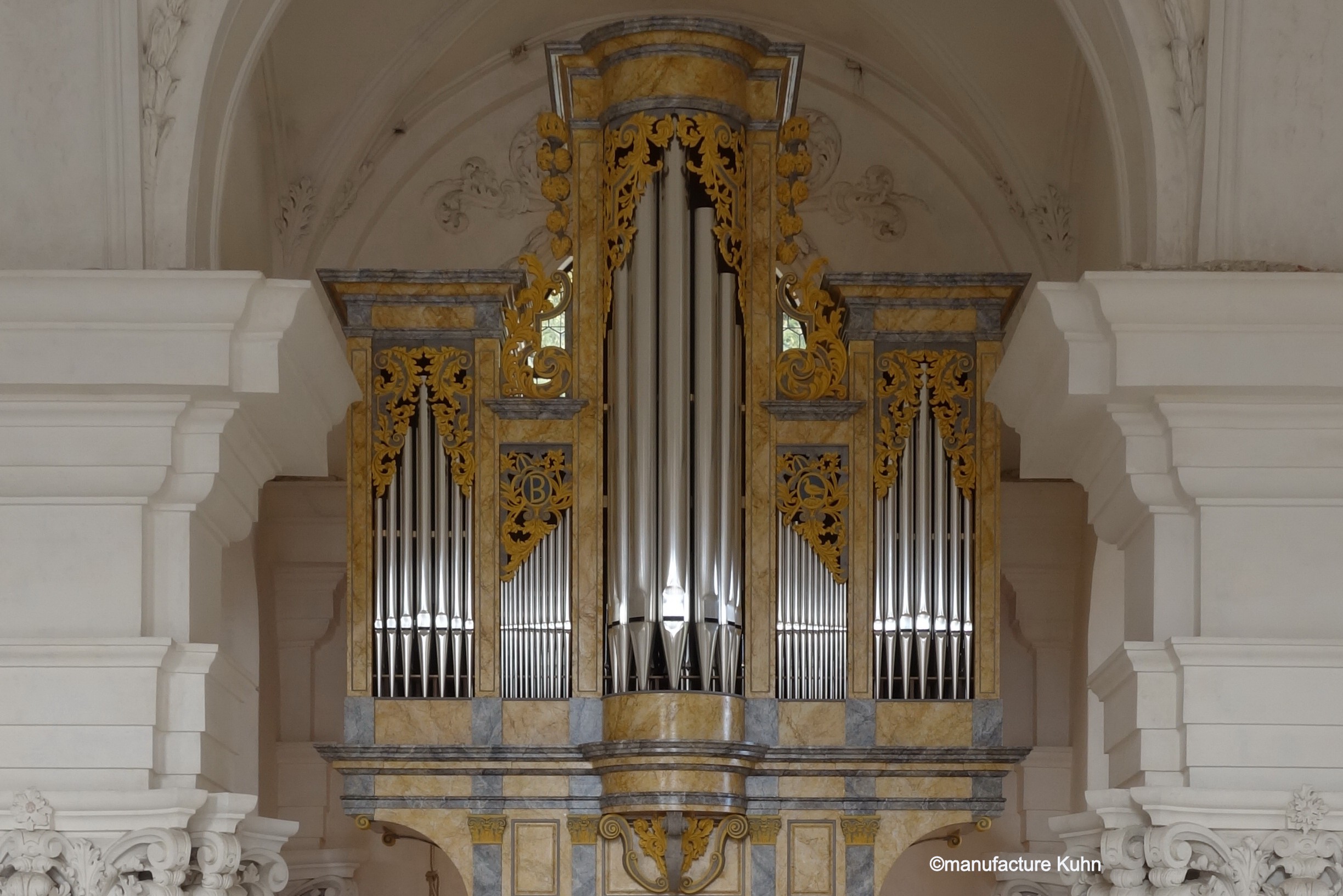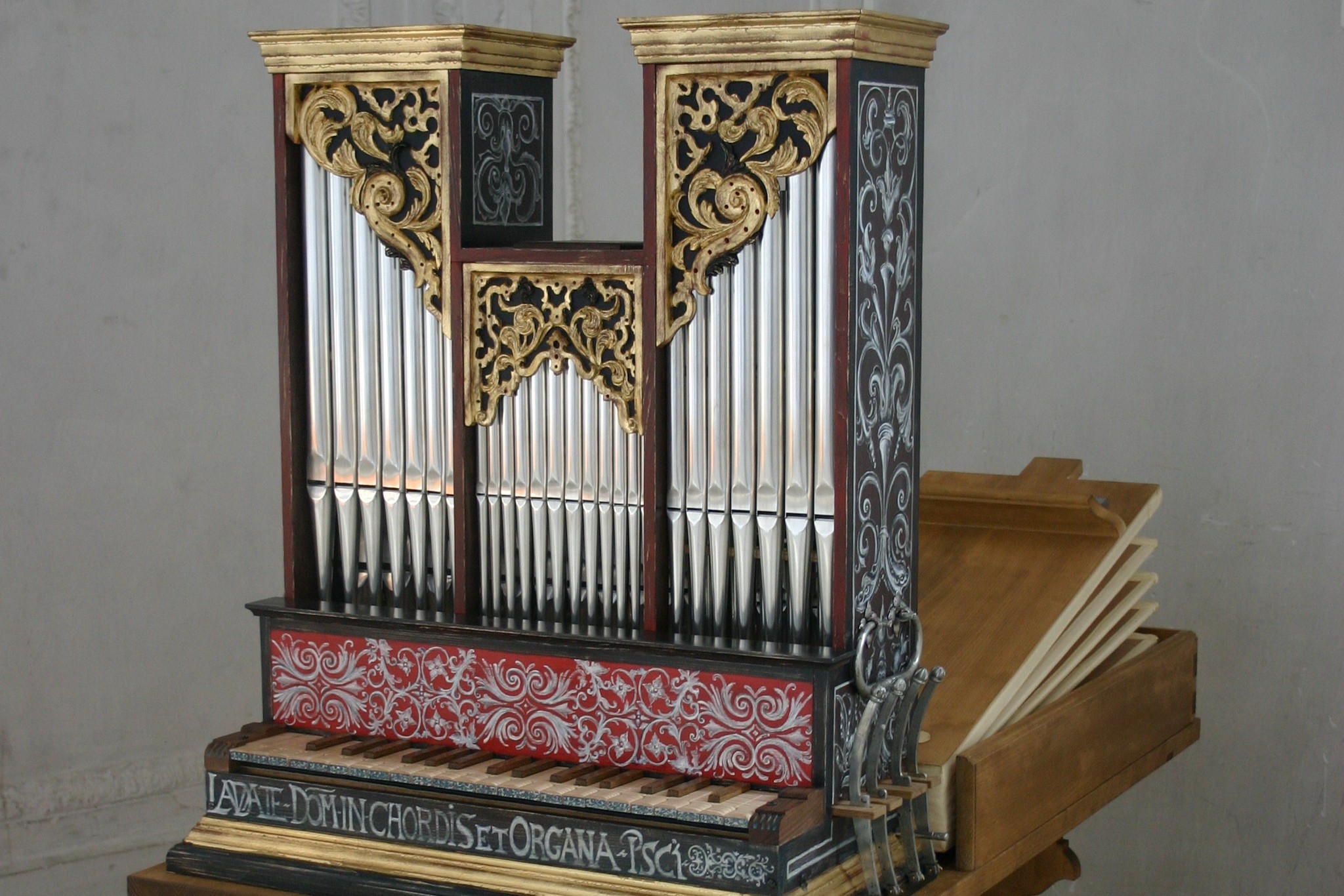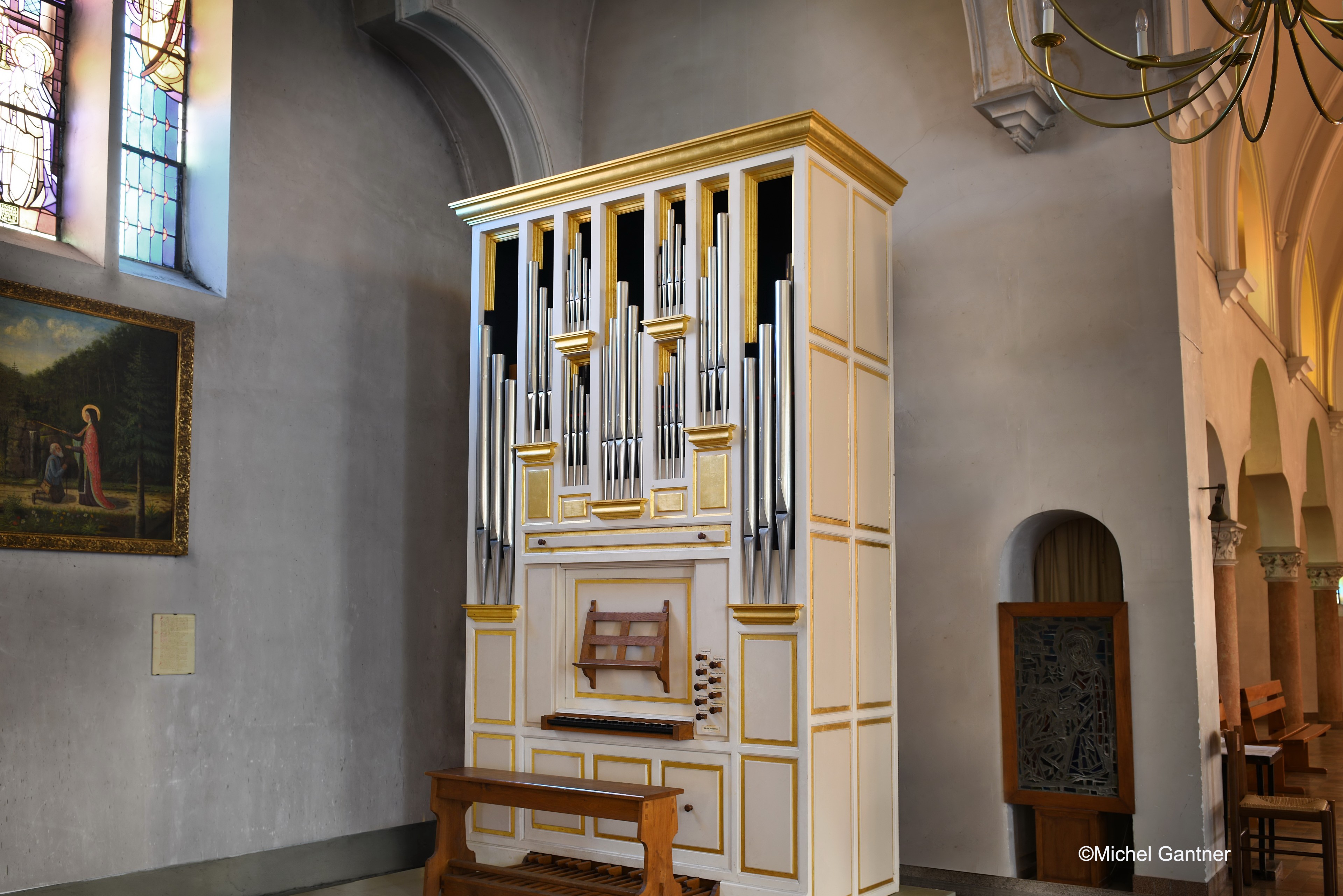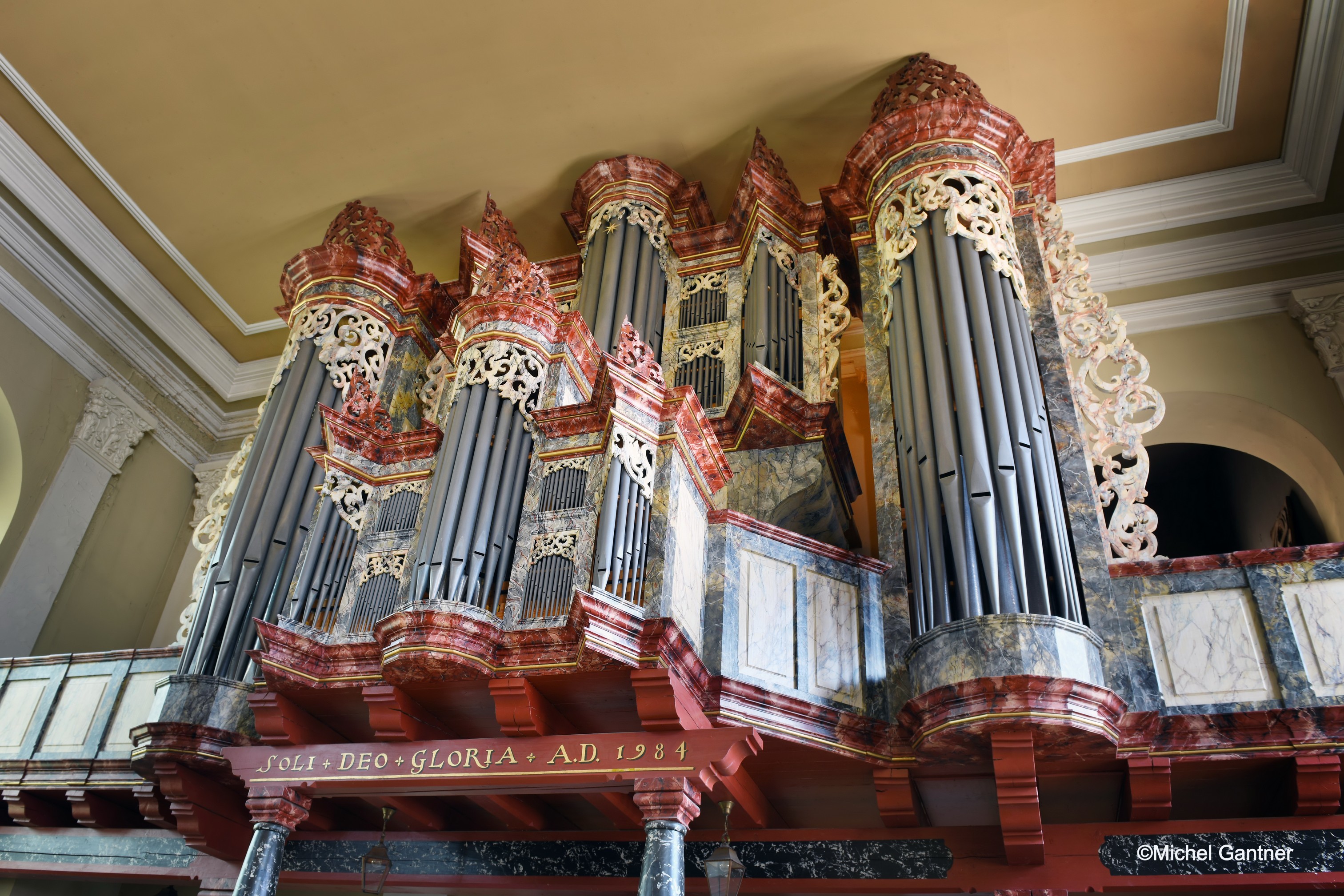Flemisch Organ in Beurnevesin
Flemisch style at St-Jacques Church - Bertrand CATTIAUX workshop
The organ in the Beurnevésin Church was built by Bertrand Cattiaux in 2019. With a Flemish aesthetic, it is a polyphonic instrument that is inspired by 17th century models, particularly found in the Antwerp region
The idea of a Flemish-style organ for the church of Beurnevésin, which had never had a pipe organ, very quickly became obvious to me. Indeed, given the richness of the region’s organological heritage and the desire to further enrich it, the choice of this aesthetic, which is still unrepresented (and in fact rarely present outside Flanders), was fully justified. Moreover, in 2008 I had already reconstructed a Flemish instrument for the church of Cossonay (Vaud), and this small organ had given me the aspiration to build a larger instrument.
We need to look back to the seventeenth century for the sources of a Flemish organ like this, so peculiar and different from other organs of the same period in Europe. The main inspiration came from the organ builders of the Bremser dynasty, Jan the father and Blasius the son. Jan moved to Flanders in the first half of the seventeenth century. Originally from Germany, he brought with him his German culture. Blasius learned his trade from his father and remained in Flanders, where he spent his entire career.
Two instruments served as sources for the Beurnevésin organ: the Jan Bremser organ in Arschot (1646) and the Blasius Bremser organ of 1670 (originally installed in a priory in Leuven). The scalings and pipe-making techniques were copied from these organs, and their windchests were also very important models.
The Beurnevésin organ is not a copy in a strict sense, but rather an adaptation to meet the requirements of the Beurnevésin parish. Thus the twelve manual registers are playable on either of the two manuals, and this artifice offers the organist a greater choice of colours; moreover, three stops are assigned to the pedalboard (which does not exist in Flemish organs), with the aim of permitting a more extensive use for the repertoire and the accompaniment of the congregation.
The quality of the action of the Beurnevésin organ (direct transmission from the keys to the valves) allows the musician to play with astonishing dynamics. Indeed, few instruments give such a sense of a direct relationship between the sound produced and the way the keyboard is touched. This can significantly change the tonal perception of the instrument.
Flemish organs are characterized by a very vocal and polyphonic sound, suited to a large repertoire, from Northern Europe, but also France, Spain and even Italy. Its sound world is very different from that of all the other instruments in the region and opens new perspectives for musicians.
B. Cattiaux
avril 2020
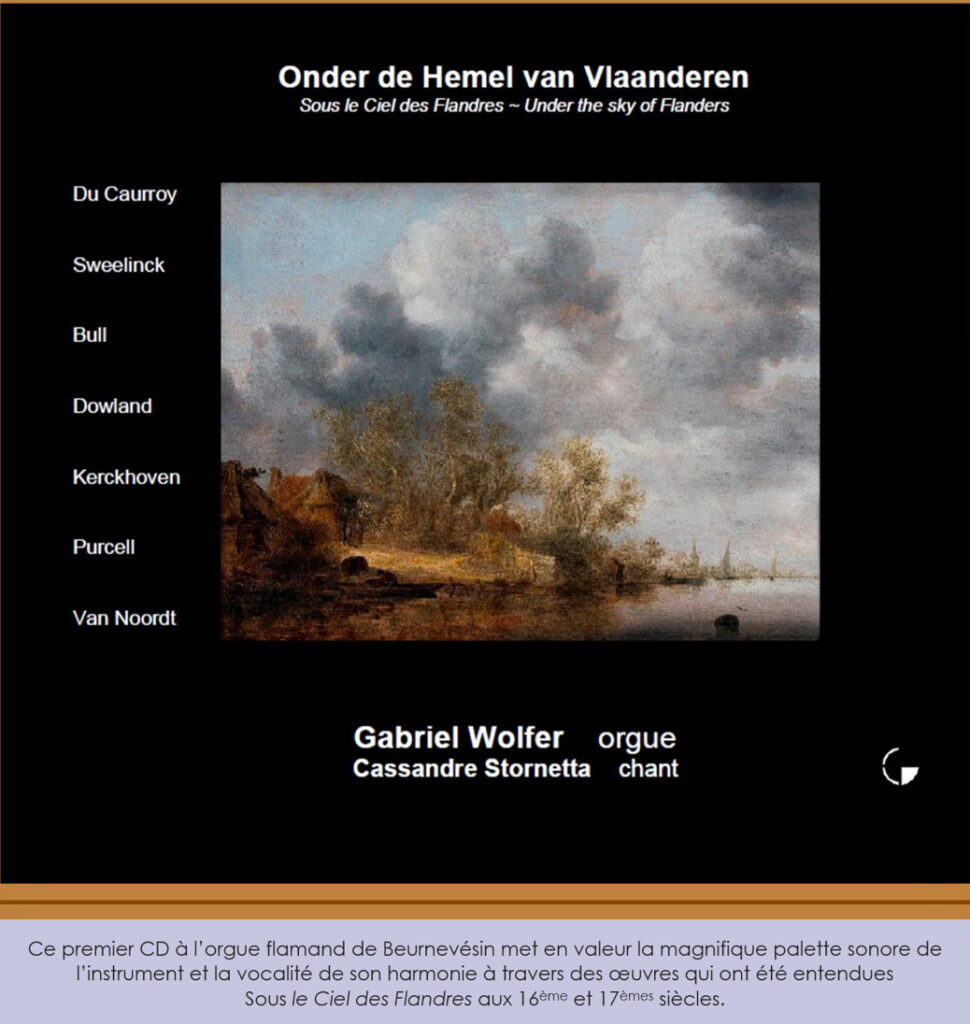

Discover the Espace2 show about this CD
Videos clips
Réalisation : Sesquialtera Productions – Production : LOR
Enregistrement le 08 Juillet 2023
